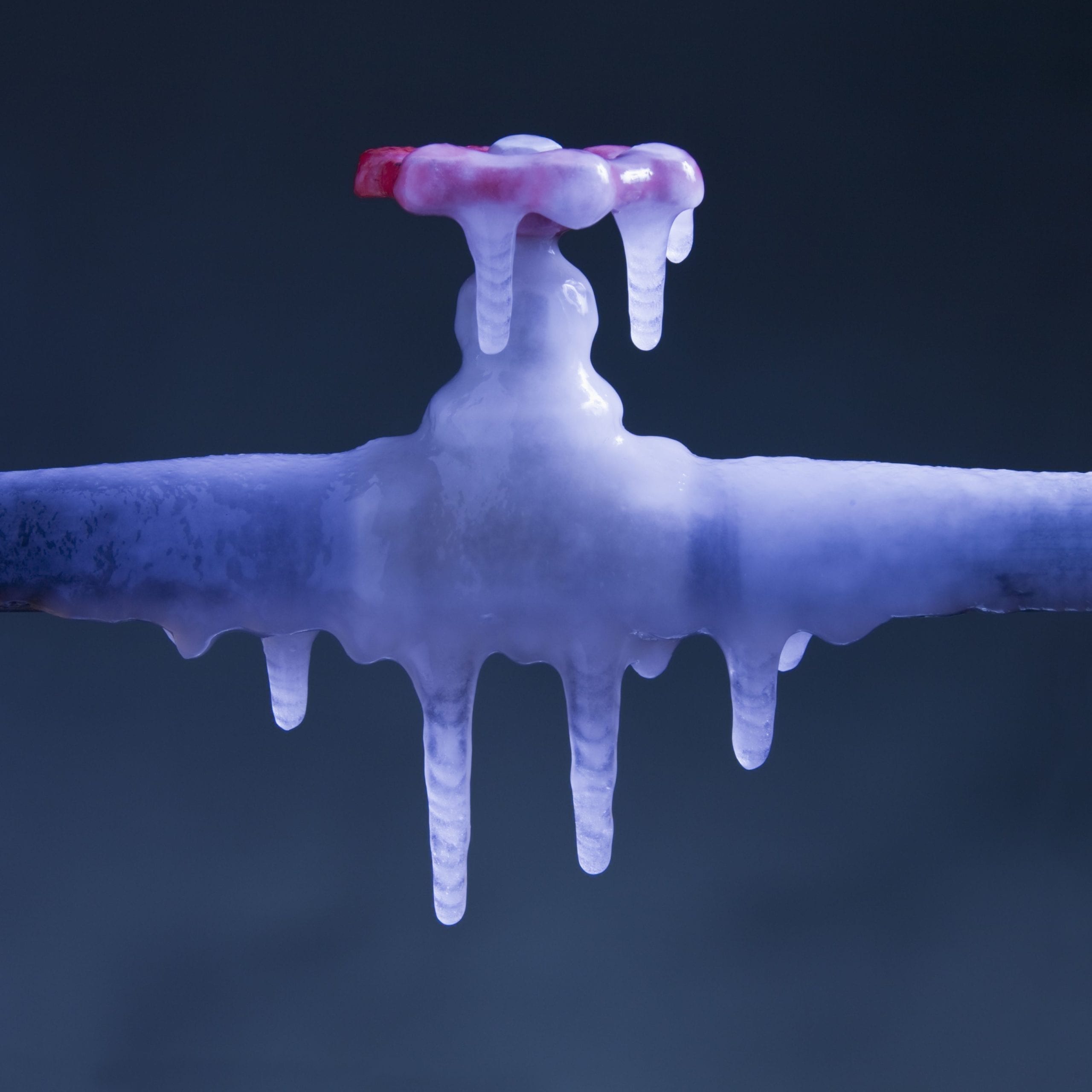 Indiana winters can get pretty cold. So cold, in fact, that it can cause problems with plumbing in your home. While temps as low as 20 degrees generally don’t cause too many issues, once it drops below that, there are a few things you need to be aware of. Here are some winter plumbing tips from our Home Comfort Experts plumbers that will keep your winter hassle free and hopefully save you a service call.
Indiana winters can get pretty cold. So cold, in fact, that it can cause problems with plumbing in your home. While temps as low as 20 degrees generally don’t cause too many issues, once it drops below that, there are a few things you need to be aware of. Here are some winter plumbing tips from our Home Comfort Experts plumbers that will keep your winter hassle free and hopefully save you a service call.
Prevent Freezing Pipes
This is one of the most common calls we get in the winter months. Our homes typically have less insulation in our walls. When temperatures plummet below zero, it can cause pipes on outside walls to freeze and burst. There are two things you can do to prevent this from happening. First, open the cabinet doors in front of your sinks. This lets the warm air from your home surround the pipes keeping the temperature above freezing. Secondly, turn your faucets on to barely a trickle overnight when temperatures are lowest. Keeping the water moving inside the pipes will also prevent them from freezing. If you will be away from home, keep your house temperature above 55° and open cabinet doors to prevent problems while you’re away.
Insulate Any Exposed Pipes
Insulating your pipes is affordable and easy. Pipe insulation is usually a foam or cloth covering that clips right onto your pipe and keeps it from freezing. Your local hardware store should have a variety of options to choose from. Make sure you insulate pipes in colder areas like the attic or garage. Seal any air leaks you find with expanding foam to keep wind chill factors from making things worse.
Don’t Forget about Outside Faucets
Also, any hoses you forgot to detach from the outside faucet will hold water in the pipe and cause it to freeze. Double check to make sure you removed them all at the end of last fall. Install an exterior, insulated faucet jacket. This will protect your outdoor faucets, as well as the connecting lines running into your home, from freezing temperatures.
Check the Sump Pump Discharge Line
Check that snow is not restricting your water drainage. Watch the area around your sump pump discharge line outside your home. If the drainage area is blocked by snow or flowing into a puddle, freezing could occur causing water to back up into the house.
Related Article: Importance of a Battery Backup Sump Pump
If pipes freeze, you can try to thaw them with a hair dryer, but whatever you do, never use a blow torch. We have seen homes catch fire which is much worse than a frozen pipe. Call the plumbing experts at Home Comfort Experts with questions or if you need any plumbing help.
 Starting in the new year, the type of heating and cooling system you can buy will be different for Indiana homeowners. You may or may not remember that back in 2006, in compliance with mandates from the Department of Energy (DOE), the heating and cooling industry moved from 10 SEER to 13 SEER as a standard efficiency rating for heating and cooling systems. These changes ensured that all heating and cooling systems on the market were more efficient and reliable. The good news is that more efficient systems cost less to run and will save you on utility bills. In 2015, the DOE has increased the minimum standard once again from 13 SEER to 14 SEER. The heating and cooling experts at Home Comfort Experts wanted to make you aware of these changes to SEER ratings in our area, and tell you how they will affect you.
Starting in the new year, the type of heating and cooling system you can buy will be different for Indiana homeowners. You may or may not remember that back in 2006, in compliance with mandates from the Department of Energy (DOE), the heating and cooling industry moved from 10 SEER to 13 SEER as a standard efficiency rating for heating and cooling systems. These changes ensured that all heating and cooling systems on the market were more efficient and reliable. The good news is that more efficient systems cost less to run and will save you on utility bills. In 2015, the DOE has increased the minimum standard once again from 13 SEER to 14 SEER. The heating and cooling experts at Home Comfort Experts wanted to make you aware of these changes to SEER ratings in our area, and tell you how they will affect you.
Understanding SEER Ratings
First things first, what is a SEER rating? In the heating and cooling industry, a furnace or air conditioner is rated by SEER or Seasonal Energy Efficiency Ratio. SEER minimum rating requirements are changing around the country based on region. This is the first time the federal government has varied these standards depending on the region of the country. The current 13 SEER standard for air conditioners will move to 14 SEER in most areas, but 13 SEER air conditioning units can still be sold in the northern region. The biggest product change regarding the new regulations involves all split-system heat pumps. All three regions will move from 13 SEER and 7.7 HSPF (Heating Seasonal Performance Factor), to the new national heat pump efficiency minimum of 14 SEER and 8.2 HSPF.
What Do You Have to Do When You Purchase a Furnace, Heat Pump or AC?
Essentially, you don’t have to take any special action. Your heating and cooling specialist will know which equipment qualifies and for how long. The majority of US manufacturers already offer 14 SEER heat pump systems, and many manufacturers may have beefed up 14 SEER designs to meet product demands for 2015. One area you may notice a change in is the familiar yellow Energy Guide label or hang tag attached to every furnace, air conditioner or heat pump unit. Instead of a single rating point, new labels for split-system air conditioners and heat pumps will now show a range representing the lowest and highest SEER ratings for all the condenser’s certified coil combinations. This will verify that all of the parts in the entire system meet the new SEER guidelines.
The team at Home Comfort Experts is dedicated to educating you on important changes in the heating and cooling industry that might affect you. If you have questions about these changes in efficiency ratings, or are in need of a new heating and cooling system, call Home Comfort Experts. We are here to help!



